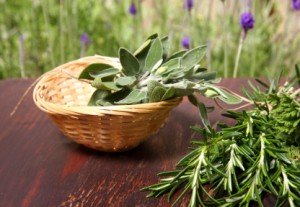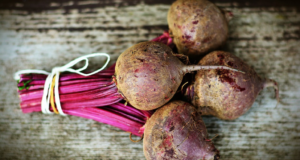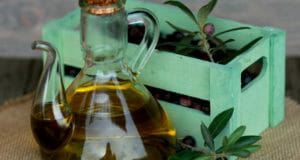 One of the most difficult aspects of living off the grid is handling medical care. There are times when you’ll need to see a doctor; for the most part, though, people like to handle their own problems. The best way to avoid an emergency is to plan ahead and make sure to have what you’ll need at your fingertips.
One of the most difficult aspects of living off the grid is handling medical care. There are times when you’ll need to see a doctor; for the most part, though, people like to handle their own problems. The best way to avoid an emergency is to plan ahead and make sure to have what you’ll need at your fingertips.
Along with building up your personal first aid kit – you should have a supply of bandages on hand, along with tweezers, antibacterial ointment and a few needles – consider what you’ll need to treat various illnesses. Aloe is well known for soothing burns and minor skin irritations, for example, and a well-planned home will have several aloe plants on hand. However, the juice from an aloe plant can also be used in tea to help soothe a sore throat. If you find yourself getting sick or hurt on a regular basis, it pays to keep aloe plants on hand.
Other plants and herbs provide a variety of health benefits, and having your own private greenhouse to grow these is a wise investment. Your health, and your family’s health, will determine how much space you’ll need to set aside for medicinal plants. If you don’t require much space, consider adding a lean-to or sun porch to your home and allowing passive solar to help keep your plants alive during the winter months. If you wind up battling colds and illness on a regular basis, you may need a larger, separate structure that incorporates active solar or wind energy for heat.
Certain plants and herbs are tough enough to survive without protection. Rosemary, an herb extensively used in French and Italian cooking, can survive outdoors in cold temperatures. The leaves and oil from the plant are useful for treating digestive problems and headaches. It is also used to help relieve tension and anxiety.
 Different types of mint are useful for treating digestive problems as well, but these plants will not survive outdoors in the cold. Lavender is used to help treat headaches, and fennel can help with feminine cramps. Garlic has antibiotic properties, and hops can help with insomnia, arthritis pain and muscle spasms. Echinacea and goldenseal can help prevent colds. Many different herbs and plants can provide you with natural relief, and reading up on these remedies is highly recommended.
Different types of mint are useful for treating digestive problems as well, but these plants will not survive outdoors in the cold. Lavender is used to help treat headaches, and fennel can help with feminine cramps. Garlic has antibiotic properties, and hops can help with insomnia, arthritis pain and muscle spasms. Echinacea and goldenseal can help prevent colds. Many different herbs and plants can provide you with natural relief, and reading up on these remedies is highly recommended.
Now that you have some idea of the different types of plants you should have on hand, it’s time to plan out how much space you’ll need. Hardy plants such as rosemary can simply be planted in your outdoor garden. If you find that dried herbs work well for you, you can plant these herbs in your garden and grow a large enough supply to last through each winter.
For certain plants and herbs, fresh works best. Aloe plants, for example, can’t be dried as you need the plant’s juice to treat ailments. This type of plant requires a great deal of warmth and should be kept indoors during the winter. Aloe plants can grow to a large size and may do best in a greenhouse rather than on your kitchen windowsill.
If you find that you only need to ensure a modest supply of fresh herbs, a small greenhouse or cold frame attached to your home will let you care for the plants easily. If you have a sun porch and a lot of windows, you already have an ideal growing environment for a small number of plants. Otherwise, building a lean-to frame with PVC pipe and a heavy-duty plastic cover will use passive solar to keep your plants warm even on cold days. For added warmth, build the lean-to around one of your home’s windows or against the wall with the chimney for your woodstove. This will help keep your plants warm at night while not raising your electricity or heating costs.
A larger, more permanent structure is necessary if you find that you and your family suffer from a large number of colds and illnesses. Plans for various greenhouse kits are free online, and many of them can be constructed with found or salvaged materials. The two key design elements are the amount of growing space and ensuring a steady supply of energy for heat.
Most greenhouses will be warm on winter days as long as the sun is out, so you only need to plan for your local night-time temperatures. You’ll want to ensure that the greenhouse has its own source of power and will continue to have heat in the event that power is lost at the main house. Active solar systems use the sun’s heat to continue providing warmth at night while requiring very little power to circulate heat. Photovoltaic panels or wind turbines combined with batteries will ensure a steady supply of electricity to power any heating unit.
Your family’s health will dictate how large of a greenhouse you need and what plants you should keep on hand. Spend some time researching various herbs and their medicinal uses, and determine how much growing space you’ll need for your chosen plants. Finally, make sure to solidly construct your greenhouse so it will hold up under any weather and temperature conditions.
_____________________________________________________________
 Off The Grid News Better Ideas For Off The Grid Living
Off The Grid News Better Ideas For Off The Grid Living



